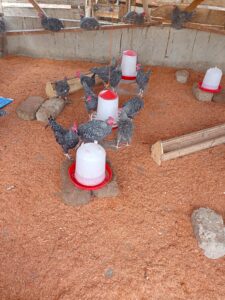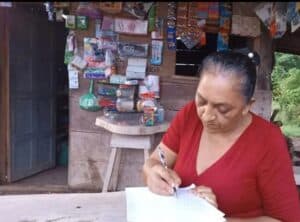Introducing Double Row Corn Technology to Nicaragua’s Farmers
By Jorge Campos Solis – Country Program Director
Technification, innovation, invention or topological designs … whatever it may be, the goal is always to reach the highest yield of corn production per manzana (1.7 acres) of land, knowing that our farmers are poor and their yield is less than 45 bushels of corn per acre. We as farmers decide whether or not to apply fertilizers, whether or not to use improved varieties, and whether or not to use hybrid seed or local varieties.
Reaching Maximum Corn Production
Every farmer wants to reach the maximum yield of corn per manzana. Some have asked me, “How much do I need to invest to reach the maximum corn production in a manzana or hectare?” If a farmer is asking me this question, I know that means that most visitors to the “Fred W. Strohbehn” Experimental Station want to know how they can get the highest yields. This is why I chose to write to you about our exciting new program using “Double Row Corn” technology.
The “Double Row Corn” technology is our own invention; that is to say, here at the “Fred W. Strohbehn” Experimental Station of Self-Help International we started designing how to introduce 12 corn plants in a linear meter, in order to obtain a population density of 120 thousand plants per hectare. We researched how close we could plant the INTA-Nutrader variety (a specific high protein corn variety), based on the results we attained from a previous single row seeding experiment, where we planted 10 centimeters between the plants and ended up producing medium and small ears. With the single row seeding experiment, we were not sure that the production was the best we could obtain.
One of Self-Help’s experienced producers, and my long-time partner, Alfredo Aleman, pioneered the experimentation and application of the technology “Double Row Corn” here at the Strohbehn training center. He counted the plants and ears to calculate the yield of his corn at about 7 tons of commercial corn per manzana (140 bushels per acre), much higher than the traditional yields of 2.5 tons (50 quintals per manzana or 50 bushels per acre). Along with this, he obtained with better technology: application of conventional fertilizers and careful management. In addition, he invested a lot of family and paid labor, for a total investment that amounted to more than $15,000 Córdobas ($500 US) per manzana (nearly $300 per acre).
Saving Resources and Increasing Yields
According to Alfredo and his experience as a farmer, “The producer saves land, labor and money, because he no longer needs to plant two, three or five manzanas, when one or two well-planted manzanas with the double row corn technique will produce just as much.”
When a farmer is given an improved variety of certified seed, we are already helping them obtain a 30% increase in their yield, not including any type of better fertilization that also may improve yields.
Farmers in the Rio San Juan area sometimes do not apply inputs, and others only apply only 46% urea (nitrogen fertilizer) at most, once or twice between 20 and 40 days before flowering. As far as we know, fertilizers have to be applied according to the needs of the crop and the nutrient deficiencies identified in the soil, but our farmers do not pay for soil analysis, because their agriculture is rotational; that is, they return to plant the same plot only after two to three years, and in some cases, even longer.
Selecting Pesticides
We select our pesticides based on what we have found in our land. In some areas the pressure of root worms is so strong that it makes the treatment of the seed with granular insecticides mandatory. In other cases, we can save the second application. The worms are much more aggressive in tropical areas since their cycle is accelerated by heat. The fertilizers are ideally applied based on a soil analysis. In other soils, efficient utilization of the nutrients or fertilizers requires a neutral pH. However, for purposes of estimating the profitability of the crop before planting, it is necessary to make some assumptions and estimates, so we decided to publish this article presenting estimated costs to achieve 6 and 7 tons of corn grain per hectare.
In general, when designing the fertilizer plan to be used, we considered: first, that they were slow-release fertilizers high in phosphorus content (mono-ammonium phosphate: N-10, P-50, K-0), second, to compensate for the utilization of nitrogen for each ton of grain, not applying 46% urea, but ammonium sulphate with sulfur (N-21, P-0, K-0, S-24) and ammonium nitrate (N-34.5, P-0, K-0) and finally, potassium nitrate (N-0, P-0, K-60) to improve the quality of the ears and grain. They all act in what is called “Stay Green” or the “state of always green” and are considered to support the process of maximum accumulation of dry matter, that is, maximum yield of corn. For a small farmer this investment is about 5,000 Córdobas ($167 US) per manaza ($98 per acre), which will be recovered at the end of the harvest.
Profitable Economic Return
We have worked with families to use this “double row corn” technology. We found that after the investments in land, inputs, family labor and hired labor, tools and equipment, it can cost a family between $660 – $830 US per manzana ($388 – $488 per acre). However, the return with this applied technology results in roughly $1,153 per manzana ($678 per acre), even after family consumption. The economic return is greater, and the harvest ensures that the farmer can feed his family. On behalf of the SHI staff, we thank you for your continued support of our farmers.









